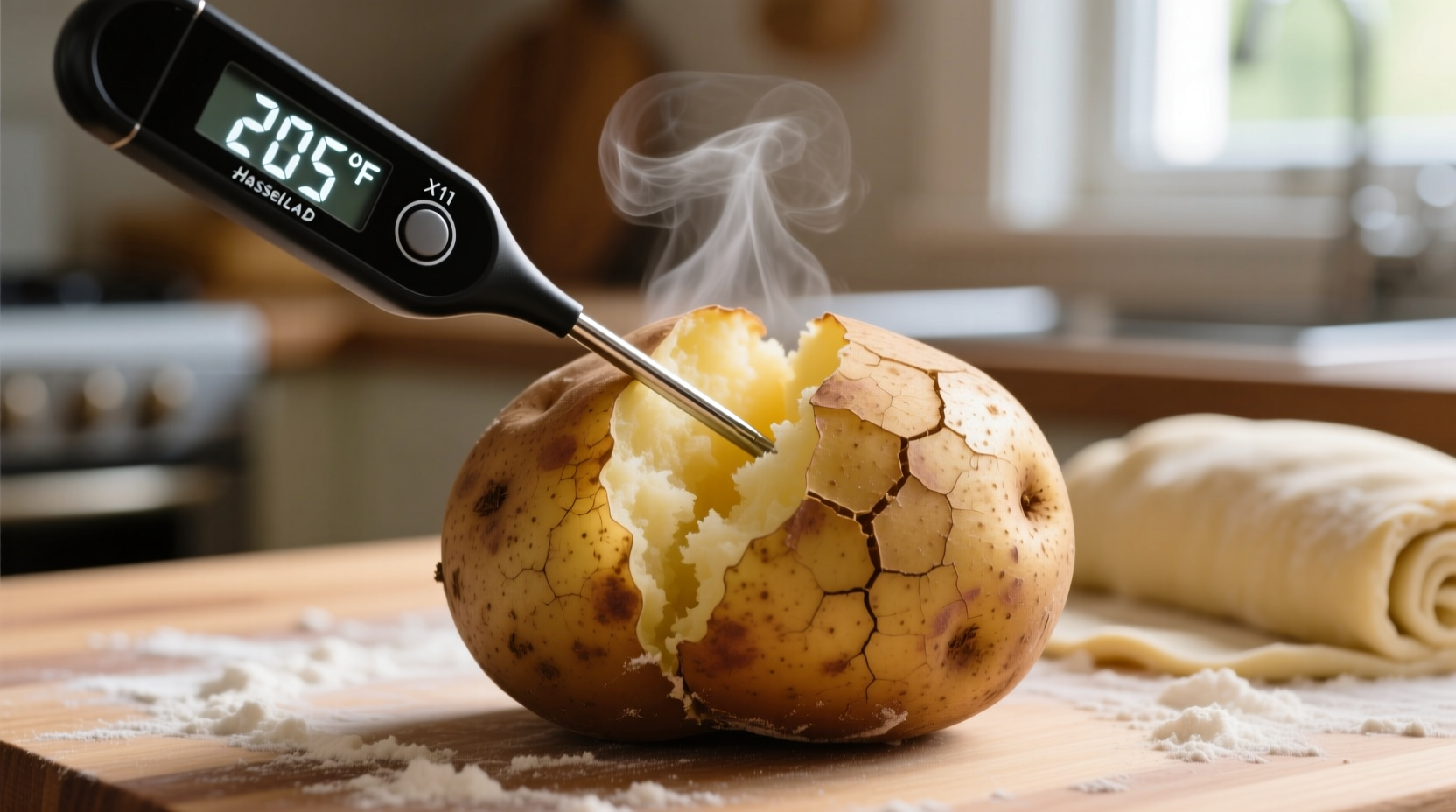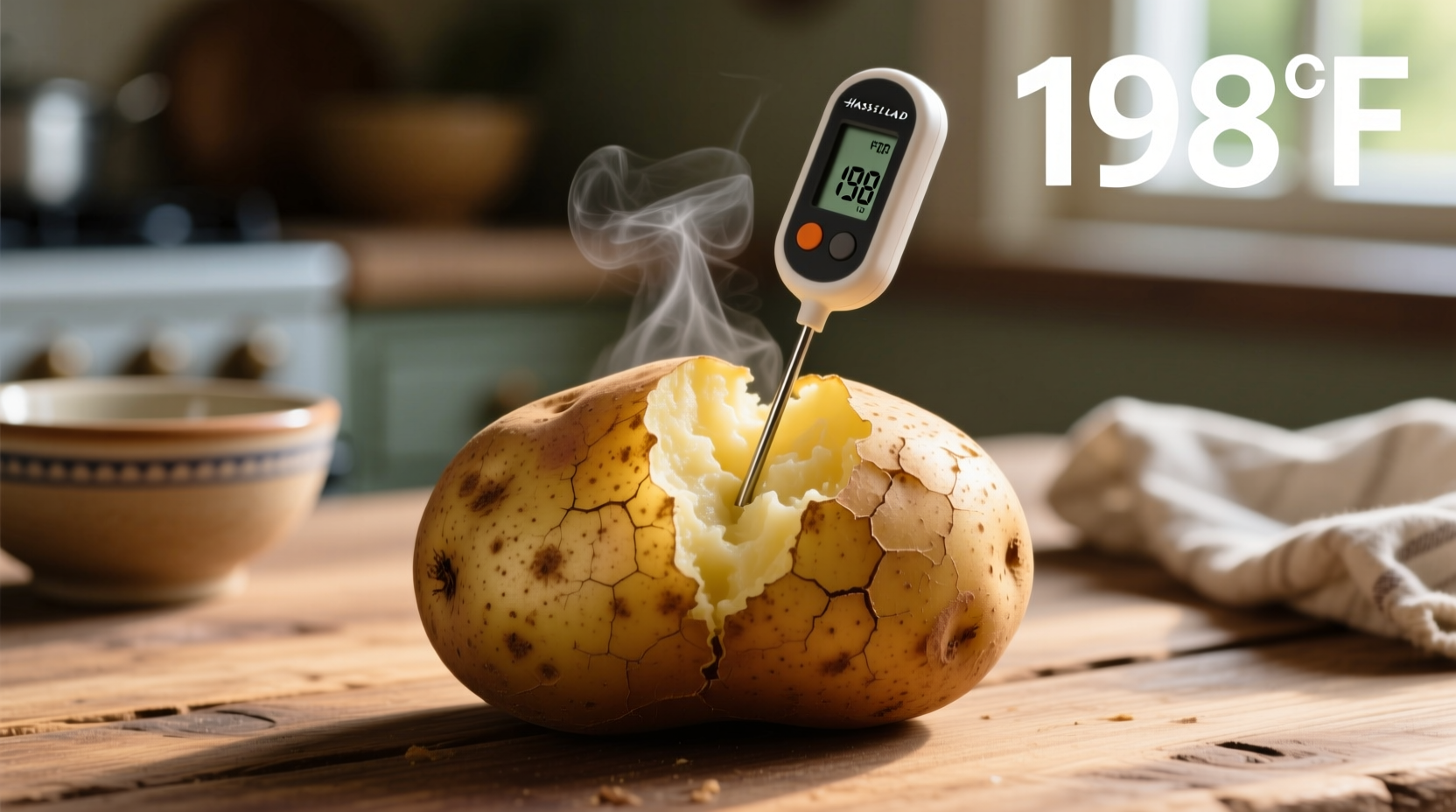Have you ever cut into a baked potato only to find a hard, dense center? Or mashed potatoes that turned out gluey instead of fluffy? The secret to perfect potato texture every time lies in precise temperature control. Understanding the science behind potato cooking temperatures transforms this humble staple from hit-or-miss to consistently delicious.
Why Potato Temperature Matters More Than You Think
Potatoes undergo a critical transformation at specific temperatures. When heated, starch granules absorb water and swell in a process called gelatinization. This scientific process directly determines your potato's final texture:
- 140-160°F (60-71°C): Starch begins absorbing water but remains hard
- 170-190°F (77-88°C): Initial gelatinization occurs, but texture remains firm
- 205-210°F (96-99°C): Complete gelatinization creates that signature fluffy interior
- Above 212°F (100°C): Excessive moisture loss leads to dry, crumbly texture
This precise temperature window explains why timing alone fails—oven temperatures vary, potato sizes differ, and starting temperatures affect cooking time. A reliable instant-read thermometer eliminates guesswork.
Measuring Potato Temperature Correctly
Proper temperature measurement technique makes all the difference:
- Insert your thermometer into the thickest part of the potato, avoiding any foil or baking dish
- Wait 10-15 seconds for an accurate reading (don't pull it out immediately)
- Check multiple spots in larger potatoes as heat distribution varies
- For mashed potatoes, test several chunks before draining
Professional chefs recommend leaving potatoes in the oven for 5-10 minutes after reaching target temperature. This allows residual heat to complete the cooking process without overcooking.
| Cooking Method | Target Temp | Texture Result | Common Mistake |
|---|---|---|---|
| Baked (Russet) | 208-210°F | Fluffy, dry interior | Under 205°F = dense center |
| Boiled (Yukon Gold) | 205-207°F | Creamy, smooth mash | Over 210°F = waterlogged |
| Roasted (Red Potatoes) | 200-205°F | Firm but tender | Below 195°F = crunchy |
| Microwaved | 205-208°F | Moist but fluffy | Inconsistent heating |
Temperature Variations by Potato Type
Not all potatoes behave the same when heated. Starch content significantly affects ideal cooking temperatures:
- High-starch potatoes (Russets, Idahos): Require the full 205-210°F range for proper gelatinization. These varieties transform from dense to fluffy at higher temperatures.
- Medium-starch potatoes (Yukon Golds): Reach optimal texture at 205-207°F. Going beyond creates overly soft results.
- Waxy potatoes (Red, Fingerling): Best at 200-205°F. Higher temperatures cause them to fall apart.
The USDA Food Safety and Inspection Service confirms that cooked potatoes should reach a minimum internal temperature of 190°F for food safety, though culinary perfection requires the higher 205-210°F range for most preparations. Their official guidelines emphasize temperature verification for all cooked foods.
Troubleshooting Common Potato Problems
Understanding temperature helps solve frequent potato issues:
Dense Center in Baked Potatoes
This occurs when the center never reaches 200°F. Solution: Bake at 400°F for 50-60 minutes, then verify with a thermometer. Larger potatoes may need 70-80 minutes. Never wrap potatoes tightly in foil, which traps steam and lowers cooking temperature.
Gluey Mashed Potatoes
Overworking potatoes below 205°F releases excess starch, creating a gummy texture. The Culinary Institute of America recommends boiling chunks until they reach 205°F, then draining and letting them sit for 2 minutes to evaporate excess surface moisture before mashing.
Uneven Roasting Results
When roasting, cut potatoes to uniform 1.5-inch pieces. The American Potato Board's research shows consistent sizing ensures even heating to the ideal 200-205°F range throughout. Toss with oil before roasting to promote even heat transfer.

Food Safety Considerations
Temperature control isn't just about texture—it's critical for safety. Potatoes left in the "danger zone" (40-140°F) for more than 2 hours can develop harmful bacteria. The FDA Food Code specifies that cooked potatoes should be held above 135°F if serving hot, or cooled rapidly below 41°F if refrigerating.
When preparing potato salad, cool cooked potatoes to 70°F within 2 hours, then to 41°F within another 4 hours. This two-stage cooling process prevents bacterial growth while maintaining texture. Always verify temperatures with a calibrated thermometer—never rely solely on timing.
Advanced Temperature Techniques
Professional kitchens use temperature control for specialty preparations:
- Par-cooking for roasting: Boil potatoes to exactly 185°F before roasting. This partially gelatinizes surface starch for crispiness while keeping interiors firm.
- Sous vide perfection: Cook potatoes at precisely 194°F for 45 minutes for uniform texture throughout.
- Mashed potato holding: Maintain at 140°F in a bain-marie for service, verified with continuous temperature monitoring.
Remember that altitude affects boiling points—at higher elevations, water boils below 212°F, requiring longer cooking times to reach the critical 205°F internal temperature. For every 1,000 feet above sea level, add 3-5 minutes to standard cooking times.











 浙公网安备
33010002000092号
浙公网安备
33010002000092号 浙B2-20120091-4
浙B2-20120091-4